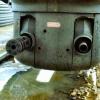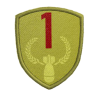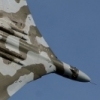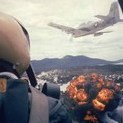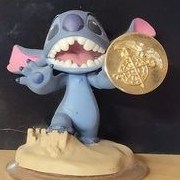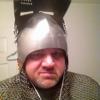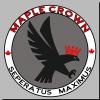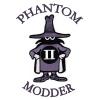Leaderboard
Popular Content
Showing most liked content on 08/30/2023 in Posts
-
9 points
-
8 points
-
8 points
-
3 pointsHi guys, has anyone come across or made a newer model for the Charles de Gaulle R91 aircraft carrier, one without static aircraft? I know there is one released by aleks1 back in 2013, but it has built-in static Rafale aircraft, which I would say only spoil the overall model. I guess chances are slim, but thought I should ask in case I have missed something.
-
3 pointsIF SF3 is scheduled for mobile then I'm not getting it, as I don't play mobile games.
-
3 pointsI would love to see an update to TK's SF series, but unless the business case stacks up for him I just can't ever see it happening. It's well known that SF2NA didn't perform well for him financially (I think he had alluded to this in old forum posts at his site) and when he tried to crowdfund a Windows 10 update it sadly didn't manage to achieve the required amount (https://fundrazr.com/31YZNe?ref=ab_2fIwazS7Daf2fIwazS7Daf). As much as I'm not a big fan of mobile games and would love to see continuous development of the SF2 series on PC, I can understand why he made the switch - just like everyone else he's got bills to pay and if he blindly stuck with the PC series with it's small yet mighty dedicated fanbase (basically us lot here) he would unfortunately have gone out of business years ago. As much as I wish it wasn't the case, I think his radio silence on the SF2 series over the last 10 (ish) years speaks for itself, if he saw a future in it I expect he would probably be a lot more vocal and interactive with the PC fanbase community.
-
3 points
-
3 points
-
3 pointsJust a quick heads up folks... FCK-1 versions (A/B and C/D) are almost done. Final polishings and other mandatory stuff (pilot model, skins, effects, decals etc) follows in the weeks to come. If anything goes well, we will make an announcement then.(at the end of this Fall) We also work to two more surprises for you guys regarding the FCK-1; they will be next, actually work for them already started. After the dust will settle about FCK-1 launch plus those two surprises, the "old soviet friend", the many years super delayed SU-34 LOL...will go into works. With some luck maybe the project will commence at the end of the year with launch around the next Spring/Summer season. GKABS team also lend us a hand in the FCK-1 project but I won't spoil for now the surprise. Stay tuned.
-
3 points
-
2 pointsIf that is the case, then where is SF3 and why did TK make SFMC instead? I am willing to guess it wasn't for fun, he has a business to run and that requires revenue and tough decisions to be made. SF2NA; by far the most advanced in the series, brought a load of new features over the previous SF2 titles and even that still didn't earn him anywhere near enough money to cover the costs of making it and to continue developing PC based sims... hence the move to mobile games. Here's another challenge for SF3... his last couple of PC sim titles have taught him that the income profile from his PC flight sims simply didn't cover his costs BUT,... let's imagine he did have the funding to develop it, is it really realistic to expect him to punt it all on the hope that it might break even, or would he invest it into something else which is far more likely to generate a steady stream of income? The fact that the recent crowdfunding project reached 16% of the required target showed him that there simply aren't enough people to justify it. If there were, it would have been over subscribed and it would probably be on the digital shelves by now. Please don't get me wrong in anything I have said above and in my previous post, I would absolutely bloody love for the SF* flight sim series to be revitalised and continue being developed into bigger and better sims (there's a reason we all continue to play and mod it, because it's still a really enjoyable series), but unless circumstances were to drastically change in the near future I just can't see it happening. (I really want to be wrong on this).
-
2 pointsGreat shots there. Do you have templates for the Kfirs or did you just repaint the existing grayish ones? Mandatory screenie: Lockheed F-35A (C.17) of the Ala 15, 151st squadron, 2025
-
2 points
-
2 pointsTo be honest, a new version wouldn't even need to have new planes or objects. It is more than clear that the community would take care of it. It should only focus on the mechanics, update the engine, migrate to 64-bit...things that would only need code and not 3d modelers and stuff like that. I don't know if it would cost that much.
-
2 pointsBlackburn Bramley Mk.IA - No.106 Squadron, RAF Bomber Command, September 1939
-
2 pointsAAAAAAH! Do you mean for cities? like small cars attached to orsin new lights? for cars on roads, I love the look of this...
-
2 pointsHa! From the very beginning of combat sim games, developers neglected these most important aspects of air war. In modern combat and even hundreds of years ago, you could not win a campaign with a proper supply chain. But NO! For game developers "air war" can only be done by fighter aircraft...crap. Disappointing. Someone once said - that fighter pilots make movies, the rest is making history.
-
2 points
-
2 pointsFile is now released for download. It only took me about 15 min to add lights to the entire Kamchatka terrain so it should be simple enough for anyone to do for any other terrain.
-
2 points
-
2 points
-
1 pointGreat work on your ships mate! Any plans for more naval mods? Maybe some civil ones?
-
1 pointWhy not just use the correct A-1 cockpit by Dels, and not the A-4 "stand in" unit???? Just thinking out loud
-
1 point100% yes ,We can see this in the campaign missions, but not in the dynamically generated SP missions ,it's a pity
-
1 pointas a shot in the dark, you could try the YAP-RW, Strike Fighters 2 and Air Combat Patrol groups. theres alot of the CA community hanging out between the three, so might be there or someone might be in touch
-
1 pointIt could be that you don't have the planes available to shoot down. Do you have the Mission Editor available to you? If so then you can see what you're supposed to shoot down. I mean personally I would take the win and fly around and then shoot stuff down.
-
1 point
-
1 pointafter fixing a few of the important bugs I'd like to see the return of FAC and to have mixed ground forces. The ability to have AAA or sam vehicles randomly added to ground support targets.
-
1 pointBlackburn Bramley Mk.I - No.10 Squadron, RAF Bomber Command, 1937 Air Ministry Specification B.9/32 issued in 1932 called for a twin-engined day bomber with high performance and unlike many contemporary Air Ministry Specifications there was no restriction on aircraft empty weight. Vickers, Handley Page and Blackburn all responded and all three companies designed distictly different aircraft ranging in weight from the Vickers Type 271 (Wellington) at 18,000lbs empty weight, through to the Handley Page HP.52 (Hampden) at 12,500lbs empty weight and down to the Blackburn B-6 at just 10,000lbs empty weight. Air Ministry officials were critical of the Blackburn design for being deficient in range and payload but conceded that the design had potential and therefore issued Air Ministry Specification B.27/33 for a twin-engined light bomber to cover a production order for 100 Blackburn B-6 aircraft later christened as the Blackburn Bramley. The development of the Blackburn Bramley moved smoothly during 1934 with no technical issues and on July 14th,1935 the prototype Bramley (K4012) made it's first flight almost a full year ahead of the Vickers Wellington and Handley Page Hampden. Flight-testing was helped by the Bramley being powered by the trouble-free Bristol Perseus nine-cylinder, single-row radial engine. Initially rated at a modest 580 h.p. the Perseus was quickly uprated as improvements were introduced and by 1936 production engines were delivering 810 h.p. which was adequate for the lightly armoured Bramley. Entering service with No.10 Squadron of RAF Bomber Command in May 1937 the Bramley Mk.I's initially wore the same NIVO green as the Handley Page Heyford's they had replaced but later switched to the dark earth and green camo with black undersides as used on Bomber Command's other new aircraft. By the time of the Munich Crisis in September 1939 four squadrons of Bomber Command were operating the Bramley but by the start of World War 2 the Bramley had passed from front-line service in the UK but would return to service with the RAF in the Middle-East at the end of 1940.
-
1 pointJournal of FLt Douglas Bell-Gordon, RNAS Part 20 14 June 1917. Manor House Hospital, Folkestone. "Wave upon wave of giant aircraft were approaching the coast east of Margate. I estimated at least fifteen or twenty Gothas." Early May 1917 – Farewell to Naval Eight It has been so long since I last picked up this journal that I must return to what seems a distant past. My last entry followed an awkward conversation with squadron commander Bromet on 3 May 1917. Later that evening, Soar and Simpson showed up at the estaminet in Auchel. “Here’s the drill,” I began after pouring double brandies for each of us. “We’re going to write two letters that will bring the whole romance between Huntington and Apollonia to an end. I spoke with D’Albiac just before heading out for town and I have reason to believe that the skipper wants to separate Huntington and me and will be shipping me off to a training job, or a defence flight, or a seaplane squadron. So that’s get this done. The first letter is from our Miss Willing to the editor of the Evening News…” My two friends sat back in their chairs looking at me open-mouthed, as if I were mad. “Reggie, let me rattle on and you take notes. I’ll do it all up in Apollonia’s hand later. For now, let’s get our ideas down.” I paused, took a deep breath, and began. “Dear Sir, We have all followed with horrifying interest the reports from France and Flanders of the vicious struggles with the enemy on the ground and in the air. It is with regard to the latter that I write you this evening. Several recent articles have mentioned the ferocity of the enemy’s military aviation and have singled out a pilot named von Richthofen as the premier German flyer. To read what has been written, one would think that the enemy dominates our own valiant boys, none of whom rise to the level of this Prussian, a level deserving of widespread renown. I believe that our newspapers are allowing a great disservice to be done to the men of the Royal Flying Corps and Royal Naval Air Service. “A while ago I entered into a friendly correspondence with Flight Lieutenant H, an officer with the Royal Navy’s air service who is currently at the front in France. I am enclosing several pages from a letter this brave fellow sent me not long ago. As you will see, he has destroyed on his own nearly thirty enemy machines in the air despite having been in France only a few months. Furthermore, in these pages he describes an encounter with an enemy aeroplane almost certainly piloted by the vaunted von Richthofen himself. Flight Lieutenant H fought that beastly Hun to a standstill and was saluted by him in the air before the fight ended. THIS is what our British aviators are capable of doing! Why are their stories not told? Why cannot we have our own heroes when those men richly deserve our recognition. I pray that you will see the wisdom in publishing Flight Lieutenant H’s account of his exploits and redress this sad situation. Sincerely, A.W., Torquay.” “Would they publish this?” asked Simpson. “Damned if I know for sure,” I said, “but I’ll bet on.” Reggie chuckled to himself. “If this appears in the paper, our boy Huntington will be doing the hatless dance in front of the wing commander. It’s just not on for our boys to be bathed in glory – unless their name is Albert Ball, at least.” I told them I would write it up and, if I were sent to England, I would post it myself. Otherwise we should have to do get Simpson’s cousin to do the trick. “How many victories has Huntington actually chalked up?” asked Simpson. I responded that his official tally was sixteen and that I had called a number of them into question, which was why the squadron commander wanted me to go away. I also ventured a guess that the squadron commander was beginning to have his own doubts about Huntington. “Now, Reggie – here is the gist of the second letter. This one is from Apollonia to Huntington himself. I’ll make sure this gets posted after the Evening News has run its article. Ready? Here goes. My dearest Samuel, I am terribly frightened that I have got you in serious trouble. I recently shared a couple of pages from one of your letters with a journalistic acquaintance. All I wanted to do was show how our brave aviators were toiling unrecognised whilst the enemy wins glory in the press through their exalted Richthofen. Two men visited me today, a naval intelligence officer and a man from the Air Board. They were asking questions about you and demanded to see all your letters. It was ever so embarrassing! They poured over your most tender thoughts and heartfelt confessions with their grubby paws and questioned me for two hours about what I knew of your station, aircraft and equipment, and your opinions on the war and the war leadership. Oh Samuel, what have I done? I fear that I have jeopardised your career by wishing so much to make you a hero as you so deserve. They made such awful threats. I cannot face you again. With heavy heart, I leave you forever… Apollonia.” Your “The man will be beside himself,” said Simpson. I took great care preparing the two letters the following day and hid them away in my valise. That evening, 4 May, I shot down a lone DFW near Bethune. This brought my tally to 14 enemy machines. On 6 May, I led a flight over the lines just north of Arras. We were jumped by a large formation of Albatros scouts – every one of which was covered at least partially red. These were the Baron’s boys. For the first few minutes it took all my skill and attention simply to avoid their fire and evade collision. Then, as the fight spread out across the sky, I found myself turning and twisting with a red and green Hun. The enemy pilot was highly skilled. Although my machine was in theory the more manoeuvrable, I soon lost the advantage of height to this fellow. Spotting a nearby cloud, I decided it was time to get away and did a half roll and dived beneath him. There was a splintering sound and the lateral control became mushy. The starboard main strut had begun to split. If it came apart my machine would break up in the air. No longer able to throw the Triplane about, I maintained a shallow dive toward the cloud and prayed. Tracer streams passed overhead and one or two rounds hit my machine. Then, mercifully, the wispy arms of the cloud surrounded me. I regained our lines and put the Tripe down in the first flat field I found. It was nearly midnight when I returned to Auchel. Time for one drink before bed. The squadron commander entered the wardroom behind me. He ordered two whiskies and motioned for me to join him by the fire. The words he used were kindly, but he made it clear that I would be leaving the squadron. He could not continue with Huntington and me in conflict. He also made a point of saying that he did not expect me to apologise to Huntington and that he understood my point of view – not that he necessarily agreed with it, just that he had heard and understood it. That was as good as it was going to get. He told me I would not be flying in the morning and would have a week’s leave. I was to be appointed as a flight commander with the Dover Defence Flight. This was a small formation of about eight aircraft, part of the defence of coastal Britain against enemy Zeppelins and bombing raids. We spoke at some length about the squadron, the various personalities who had come and gone, the early days at Vert Galant, and then some technical matters. We shook hands and left as good colleagues should. May 1917 – Leave I arrived in Dover on 7 May 1917 after a rough passage in a destroyer, the name of which has quite escaped me. I reported to the aerodrome on Gunston Road, just north of the town and castle, there to discover (to my complete surprise) that there was no commanding officer to whom I should report at that location. The Wing Commander was in Dover and it appeared that I was the commander of all I surveyed at the aerodrome – a “squadron minus”, consisting of five Sopwith Pups and a pair of ancient Bristol scouts. I stayed there only an hour or two to chat with the pilots and meet for a while longer with Flight Lieutenant Munro, a diminutive Cumbrian who was in temporary command of the flight. None of the chaps other than Munro had experience in France, and Munro’s experience before being sent for flying training and drafted to the Royal Navy Aeroplane Station at Dover was as an observer with Naval Four. The Wing Commander was away at a conference and I reported to his Number One. There I learned that I had leave until 16 May. The first thought was to do what we all did – make a straight line for London, get blindingly drunk, and then visit dance halls and theatres. On reflection, however, that did not truly interest me. I knew no one in London and was thoroughly exhausted. My months in France had not affected me the way it had so many of my colleagues. I had not suffered from nightmares, the shakes, irritability, and growing dread of war flying, but now that I was in Britain I felt an overwhelming sense of fatigue and loneliness. I went to the train station and found a locker for my possessions, then bought a haversack, into which I stuffed some work trousers, drawers and singlets, and a work shirt. I found a shop where I could buy a water bottle with a cork stopper, breeks, long woollen stockings, and a simple jacket. Having nowhere to change, I booked myself into a small and cheap seaside hotel to spend the night. After dinner, I bought a copy of the Evening News and addressed an envelope to its editor in the hand of Apollonia Willing. The postmark would not say Torquay. With luck, the envelope would be thrown into a wastepaper basket before being given to the editor. I slipped the letter I had prepared into the envelope and left it with the front desk for the evening post. In the morning I took to the road. A cool drizzle soon gave way to bright sunshine and clear skies as I walked westward along the coast. I was in Folkestone for lunch, after which I left the main roads and wondered through the north part of town until I found a good walking path into the countryside. I found a pub with simple lodgings near Brabourne and made an early night of it, dining on steak and kidney pudding, chips, and good (for wartime) ale. The publican discovered that I was a Canadian flyer and from that point would not accept my money. Needless to say, I was rather late getting back on the trail in the morning. Over the next several days I wandered northwest through the verdant hills and lush valleys of the North Downs until I came to Wye. From there I turned north-east, arriving a couple of days later at Canterbury. There I spent two nights and enjoyed my days exploring the town and its famous cathedral. The papers were reporting that Albert Ball was missing. It was good to be in England. Everyone runs out of luck eventually. Finally, I took the train back into Dover to retrieve my possessions at the station. I booked myself into the Grand Hotel with the room overlooking the Granville Gardens. There I enjoyed a hot bath and had my uniforms laundered and properly pressed. I found a good military tailor in town who furnished my cuffs with the star designating a flight commander. Thus equipped, I went on 15 May to take over my first command. 16 May - 18 June The first few days at RNAS Dover were spent getting to know our people. The pilots are mostly inexperienced. All are British except for Sub-Lieutenant Henderson, a Canadian from Toronto. I am capably assisted by Chief Petty Officer Blackwell, who oversees general discipline and is also in charge of the aircraft mechanics. I lack a records officer but have a petty officer paywriter fulfilling that role. One of the first things I shall have to do is sort out priorities with the Chief. The flight exhibits a degree of spit and polish that would be most unusual in France. I should like to see that relaxed very slightly. On the other hand, not enough attention is paid to the technical side of our operation. I want the mechanics to duplicate all control wires on our machines and I want the pilots to begin paying personal attention to the zeroing of their machine guns and to their ammunition. I have flown with the men every day, striving to improve their formation work. The only exception was on 19 May, when I flew a Sopwith Pup to Gosport, near Portsmouth and not too distant from Torquay. There I posted Apollonia’s farewell letter to Huntington. I must be an evil man, for I did not feel an ounce of guilt. On 20 May, we were joyfully astounded to learn that we had been allocated two of the latest fighting machines by Sopwith. These machines have been nicknamed the “Camel” because of the hump-like protuberance over the breeches of their twin synchronised Vickers guns. I have claimed one and Munro the other. Frankly, it frightens me to consider giving these things to some of our pilots. The Camels are unstable creatures requiring full rudder on takeoff to counter the powerful gyroscopic effect of the 130 horsepower Clerget rotary engines. In a left turn, the nose wants to point up at the heavens and a stall is easy to induce. In a right turn, the nose wants to snap under the rest of the machine and a spin is difficult to avoid. And if you enter into a spin, it is the very devil to get out of it before the ground hits you in the face. Munro and I spent the first two days gingerly learning to coax this wild beast to follow our commands. For all its frightening habits, the machine promises to be the nimblest thing in the air if you can tame it. On 25 May we received a call warning of approaching enemy aircraft and we patrolled for more than an hour from Dover up to Manston. Unfortunately, the Huns failed to show up for the party. Three more weeks of uneventful patrols followed. Finally, on 13 June 1917, we were dispatched to intercept an expected raid by Gothas, the giant two-engined bombing machines the Germans have unleashed on England. Instead of climbing to altitude near our aerodrome as we usually did, I told the boys to meet up over Margate, as this was where the enemy was expected to make landfall. In our Camels, Munro and I climbed away from the others. We passed west of Ramsgate at 10,000 feet and saw Archie bursts in the distance to the north-east. Climbing hard, we were astounded at the view. Wave upon wave of giant aircraft were approaching the coast east of Margate. I estimated at least fifteen or twenty Gothas. Looking behind, I realised we had left our pups and Bristols far behind. I fired a red flare and signalled to Munro to attack the enemy directly. When we were still almost a mile from contact, the leading Gothas began releasing their bombs and turning away eastward. The trailing Huns dropped their bombs over water and turned back. I picked the machine I was most likely to intercept and climbed for it. My selected Gotha had been one of the trailing machines but now was near the front of the pack running home. Unfortunately, there were other Hun machines behind and above me, but there was no avoiding them. I would have to take my chances. Thanks to the powerful Clerget I began to close on my Gotha and pulled out of range of the enemy bombers behind me. When I was about 300 or 400 yards away, its gunner opened fire. We had been puzzling for a couple of weeks about whether the Gotha had a machine gun that could fire downwards. My impression was that it certainly did. Although I was nicely tucked under the Hun’s tail, his rounds were snapping past my head. Then another Gotha off to my port side began to fire. I held fire until I was 200 yards away. By this time several rounds smacked into my Camel. I fired a long burst without any visible effect – I was clearly too nervous to shoot well. I began a second burst when suddenly the forward port cabane strut splintered and I felt a whiplash across my face. I pulled away involuntarily and, true to its nature, the Camel entered a spin. By the time I recovered my machine had dropped several thousand feet and the Huns were well out to sea. I had blood on my flying coat and my goggles had disappeared. I throttled back and began a gentle glide homeward. On landing I was driven to the Royal Victoria Hospital in Folkestone where a great deal of Camel was removed from my temple, cheek, and jaw. The injuries were neither painful or debilitating, despite which I am required to remain in a convalescent hospital for a week to ensure that the minor wounds do not become septic. Munro has visited twice and kept me up to date with news of the flight.
-
1 point
-
1 point
-
1 pointYes you are correct one file in particular that need to be changed to match the original texture for everything defiant country is the PIRATE.jpg
-
1 point
-
1 point
Important Information
By using this site, you agree to our Terms of Use, Privacy Policy, and We have placed cookies on your device to help make this website better. You can adjust your cookie settings, otherwise we'll assume you're okay to continue..




